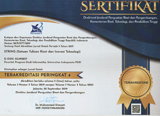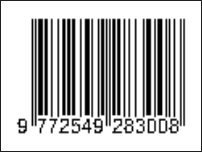Perbandingan Optimizer Adagrad, Adadelta dan Adam dalam Klasifikasi Gambar Menggunakan Deep Learning
(1)
(2) Universitas Indraprasta PGRI
(*) Corresponding Author
Abstract
Image recognition technology has developed rapidly in recent times. There are many methods springing up in its use. One of them is the Convolutional Neural Network (CNN) as used in this research. The method is used to detect image patterns from the shape of the arrangement of the fingers of one hand as a signal from the identification of the numbers 0 to 9 in SIBI (Indonesian Sign Language System). The problem of the research is that many optimizers emerge in a deep learning method. Therefore, selecting the right optimizer itself is a challenge that can be used as the next reference for input images that do not go through the previous pre-processing stage. The aim of the research is to get the best accuracy score from the comparison of 3 optimizers and their relations to processing time. The conclusion obtained shows that AdaDelta optimizer that has existed for a long time can provide better results than Adam which is the development of the last optimizer.
Keywords
Full Text:
PDFReferences
L. Alzubaidi et al., “Review of deep learning: concepts, CNN architectures, challenges, applications, future directions,” J. Big Data, Springer Open, vol. 8, no. 53, 2021.
G. Ranganathan, “A Study to Find Facts Behind Preprocessing On Deep Learning Algorithms,” J. Innov. Image Process., vol. 03, no. 01, pp. 66–74, 2021.
A. A. Lydia et al, “Adagrad - An Optimizer for Stochastic Gradient Descent,” Int. J. Inf. Comput. Sci., vol. 6, no. 5, 2019.
Z. Qu et al, “Genetic Optimization Method of Pantograph and Catenary Comprehensive Monitor Status Prediction Model Based on Adadelta Deep Neural Network,” IEEE Access, vol. 7, 2019.
S. Bock, “An improvement of the convergence proof of the ADAM-optimizer,” Conf. Pap. Oth Clust., 2018.
C. R. Kothari, Research Methodology, Methods & Techniques, Second Rev. New Age International (P) Ltd., 2004.
E. Willow, OpenCV-Python Tutorials Documentation, Release Beta. OpenCV, 2017.
M. Abadi, “A Computational Model for TensorFlow,” Proceeding 1st ACM SIGPLAN Int. Work. Mach. Learn. Program. Lang., 2017.
M. B. S. Bakti and Y. M. Pranoto, “Pengenalan Angka Sistem Isyarat Bahasa Indonesia Dengan Menggunakan Metode Convolutional Neural Network,” Semin. Nas. Inov. Teknol., 2019.
R. Yacouby and D. Axman, Probabilistic Extension of Precision, Recall, and F1 Score for More Thorough Evaluation of Classification Models. Association for Computational Linguistics, 2020.
DOI: http://dx.doi.org/10.30998/string.v8i1.16564
Refbacks
- There are currently no refbacks.
Copyright (c) 2023 Shedriko Shedriko, Muhammad Firdaus

This work is licensed under a Creative Commons Attribution 4.0 International License.
STRING (Satuan Tulisan Riset dan Inovasi Teknologi) indexed by:

Ciptaan disebarluaskan di bawah Lisensi Creative Commons Atribusi 4.0 Internasional.
View My Stats


 Sertifikat Akreditasi
Sertifikat Akreditasi
















